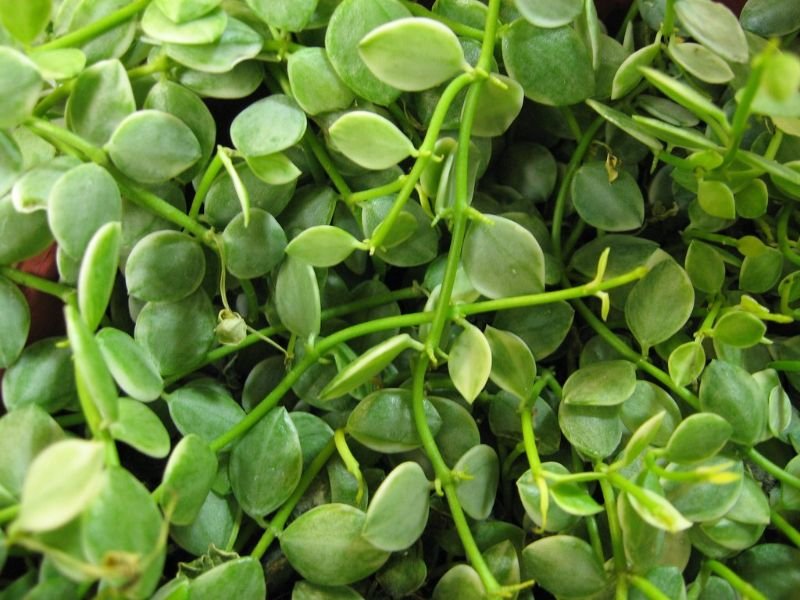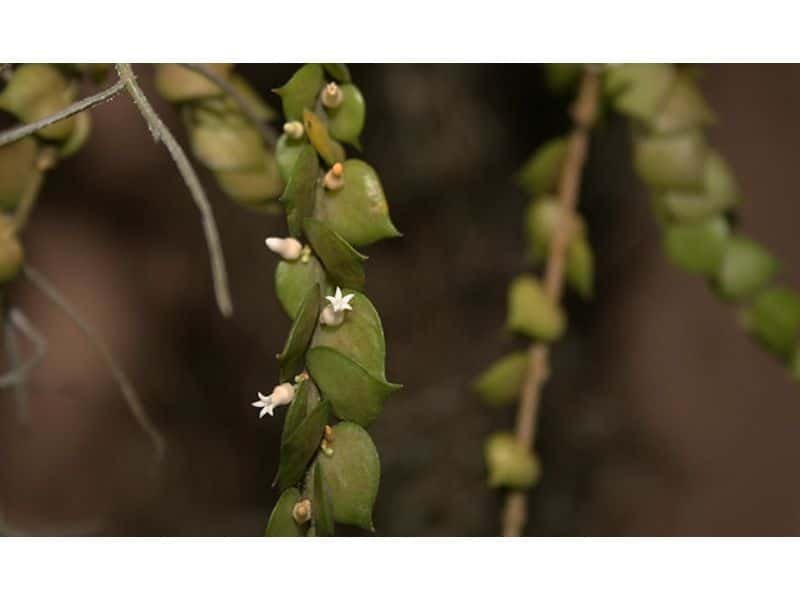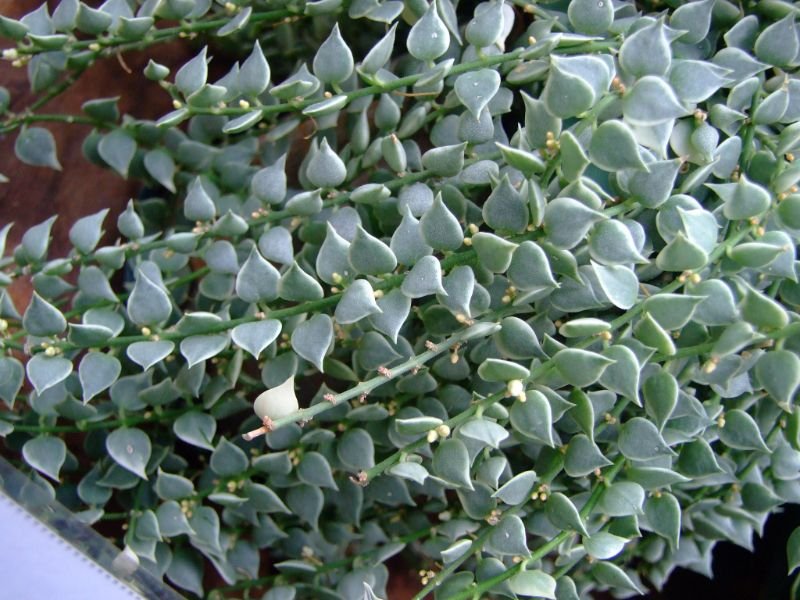If you are a plant enthusiast, you must have come across the beautiful Dischidia Ruscifolia. It is a popular houseplant that has gained a lot of popularity in recent years. However, many people find it challenging to care for this beautiful plant. In this article, we will provide you with a complete guide to Dischidia Ruscifolia care that will help you keep this plant healthy and thriving.
Table of Contents
Introduction to Dischidia Ruscifolia
Dischidia Ruscifolia, also known as Million Hearts, is a type of tropical evergreen vine that belongs to the family Apocynaceae, which includes other popular plants like the Hoya plant. It is native to Southeast Asia, particularly Indonesia and the Philippines. The plant is known for its heart-shaped leaves that grow in pairs along thin stems, which can reach up to several feet in length. Its trailing foliage can create a beautiful cascading effect, making it a popular choice for hanging baskets. The leaves are dark green in color, have a leathery texture, and are small and round, resembling those of the Ruscus plant.
| Characteristics and Care | Details |
|---|---|
| Common Name | Dischidia ruscifolia |
| Scientific Name | Dischidia ruscifolia |
| Plant Type | Epiphytic plant |
| Height | Can grow up to 6 feet (1.8 meters) long |
| Toxicity for Humans | Non-toxic |
| Toxicity for Pets | Safe for pets |
| Physical Characteristics | Small, trailing vine with oval, dark green leaves; also produces small, star-shaped white or pink flowers |
| Natural Habitat | Native to Southeast Asia |
| Growing Conditions | Bright, indirect light; high humidity; well-draining soil |
| Watering | Water thoroughly, then allow the top 1-2 inches of soil to dry out before watering again |
| Soil | Well-draining soil, such as a mixture of peat moss and perlite |
| Fertilizer | Fertilize every 2-3 months with a balanced fertilizer |
| Temperature | Prefers temperatures between 65-80°F (18-27°C) |
| Pruning | Prune to control size and shape, and to encourage bushier growth |
| Propagation | Propagate using stem cuttings |
| Common Issues | Pests, diseases, over or under-watering, yellowing or browning leaves, drooping or wilting |
| Solutions | Use insecticidal soap for pests, address underlying issues for yellowing or browning leaves, adjust watering frequency and technique as needed, increase or decrease humidity as needed |
The physical characteristics of Dischidia ruscifolia

Dischidia ruscifolia is a unique plant species that exhibit a range of physical characteristics. This plant has small, round leaves that grow in clusters along thin, trailing stems. The leaves are heart-shaped and feature delicate patterns of veins, which give the plant a striking appearance. Dischidia ruscifolia can grow up to 20 inches long and requires some support, such as a trellis or a moss pole, to keep it from trailing along the ground.
Natural habitat and growing conditions
In its natural habitat, Dischidia ruscifolia thrives in the tropical rainforests of Southeast Asia. It prefers a warm and humid environment with plenty of indirect sunlight. The plant is often found growing on the trunks of trees, where it receives some dappled light and protection from direct sun exposure.
When it comes to growing Dischidia ruscifolia in indoor environments, it is important to replicate its natural habitat as closely as possible. This means providing the plant with warm and humid conditions, filtered sunlight, and a well-draining soil mix. In addition, it is important to avoid exposing the plant to extreme temperatures, as this can cause damage to the foliage and stunted growth.
The importance and benefits of caring Dischidia Ruscifolia ‘Million Hearts’
It is important to care for Dischidia ruscifolia, not only for its aesthetic value but also because it plays a vital role in maintaining a healthy ecosystem. In its natural habitat, this plant provides shelter and sustenance for a wide range of insects, birds, and animals.
In addition, caring for Dischidia ruscifolia can be a rewarding experience for plant enthusiasts. The process of nurturing this plant can help improve one’s mental health and well-being by providing a sense of purpose and responsibility. With the right care, this plant can thrive in indoor environments, bringing a touch of greenery and tranquility to any living space.
So, whether you are a seasoned gardener or a beginner, learning how to care for Dischidia ruscifolia can be a valuable and fulfilling experience. In the following sections, we will provide you with some tips and guidelines to help you care for this beautiful plant.
Tips for Dischidia Ruscifolia Care

Light requirements and placement
Light requirements and placement are critical factors for Dischidia ruscifolia care. This plant prefers bright, indirect light and can be placed near a north or east-facing window. However, it is important to avoid placing the plant in direct sunlight, as this can scorch the leaves and cause damage to the plant. If the plant is not receiving enough light, it may become leggy and the leaves may lose their vibrant green color.
Watering frequency and technique
Watering frequency and technique are also crucial for the health and growth of Dischidia ruscifolia. This plant prefers to be kept evenly moist, but not waterlogged. It is important to allow the top inch of soil to dry out between waterings, and to avoid getting water on the leaves, as this can cause damage to the plant. Overwatering can lead to root rot and yellowing of the leaves, while underwatering can cause the plant to wilt and dry out.
Soil and fertilizer needs
When it comes to soil and fertilizer needs, Dischidia ruscifolia requires a well-draining soil mix that is rich in organic matter. A mix of peat moss, perlite, and coarse sand can provide the ideal growing medium for this plant. In terms of fertilization, Dischidia ruscifolia benefits from regular feeding during the growing season with a balanced liquid fertilizer. However, it is important to avoid over-fertilizing, as this can lead to the build-up of salts in the soil and damage to the roots.
Humidity and temperature requirements
Humidity and temperature requirements are also important for Dischidia ruscifolia care. This plant prefers a warm and humid environment, with temperatures between 60 and 85 degrees Fahrenheit. To increase the humidity levels around the plant, it can be placed on a tray of pebbles filled with water or misted regularly with a spray bottle.
Pruning and propagation
Pruning and propagation are essential for maintaining the health and appearance of Dischidia ruscifolia. Regular pruning can help promote bushier growth and prevent the plant from becoming too leggy. Propagation can be done by taking stem cuttings and placing them in water or a well-draining soil mix. With a little bit of care and attention, Dischidia ruscifolia can be a beautiful and rewarding plant to care for.
Common Issues and Solutions

Pests and diseases
Dischidia ruscifolia is a hardy plant, but like all plants, it is not immune to issues. One common problem that gardeners may encounter is pests and diseases. Mealybugs, spider mites, and scale insects are common pests that can infest this plant, while fungal diseases such as powdery mildew and root rot can also be a concern. Pests can be controlled with insecticidal soap or neem oil, while proper watering and well-draining soil can help prevent fungal issues.
Signs of over or under watering
Over or under-watering can also cause issues for Dischidia ruscifolia. Signs of over-watering include yellowing leaves and a mushy or rotten smell from the soil, while under-watering can cause the leaves to wilt or brown. To avoid these problems, it is important to keep an eye on the soil moisture level and water the plant only when the top inch of the soil is dry.
Yellowing or browning leaves
Yellowing or browning leaves can be another issue that gardeners may encounter. This can be caused by a variety of factors, including over-watering, under-watering, nutrient deficiencies, or pests. To diagnose the issue, it is important to examine the plant and the soil and make any necessary adjustments to care.
Drooping or wilting
Drooping or wilting is another common problem that can be caused by a variety of factors. Over or under-watering, pests, or environmental stressors such as temperature fluctuations can all lead to drooping or wilting leaves. By addressing the underlying cause of the issue, gardeners can help ensure the long-term health and vitality of their Dischidia ruscifolia plant.
Conclusion
In conclusion, Dischidia ruscifolia is a unique and beautiful plant that can make a great addition to any indoor garden. By understanding its physical characteristics and natural habitat, gardeners can better understand its care requirements and create an environment in which it can thrive.
To keep a Dischidia ruscifolia plant healthy, gardeners should pay close attention to its light requirements, watering frequency and technique, soil and fertilizer needs, and humidity and temperature requirements. Pruning and propagation can also be important tools to help maintain the plant’s health and vitality.
By staying alert for common issues such as pests, diseases, over or under-watering, yellowing or browning leaves, and drooping or wilting, gardeners can take the necessary steps to address these issues and help ensure the plant’s long-term health.
In summary, caring for a Dischidia ruscifolia plant can be a rewarding and enjoyable experience for gardeners of all levels. With the right care and attention, this plant can thrive and bring beauty and vitality to any indoor space.

Gardening is my passion and growing plants indoors has always been a stress relief for me. Grow a banana tree in my apartment once (although failed to produce bananas).






